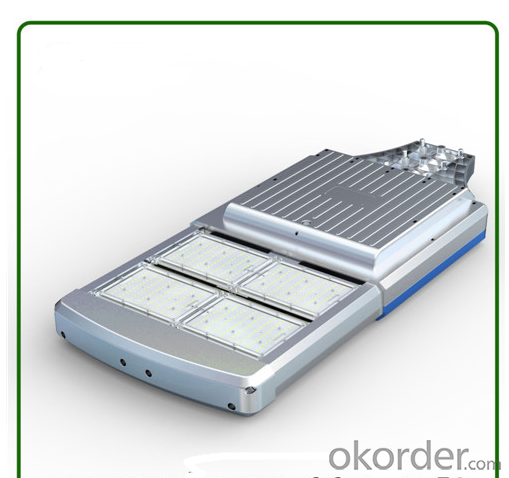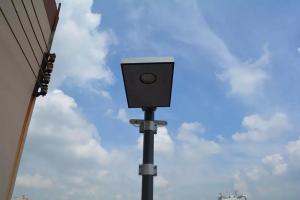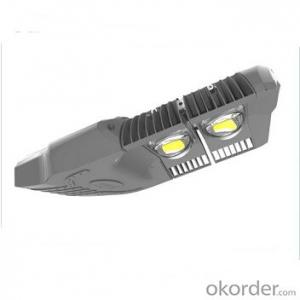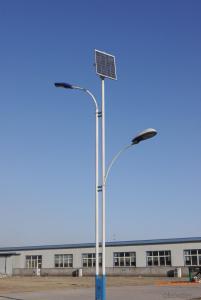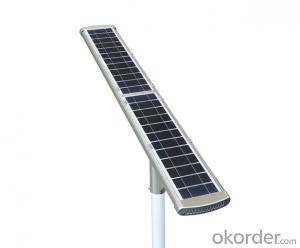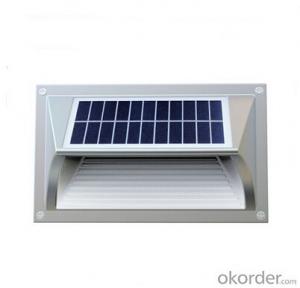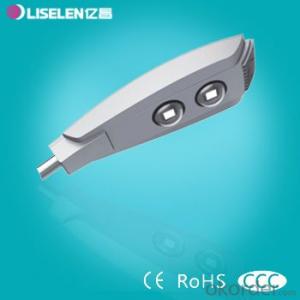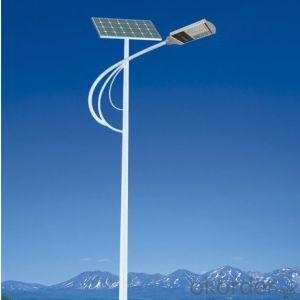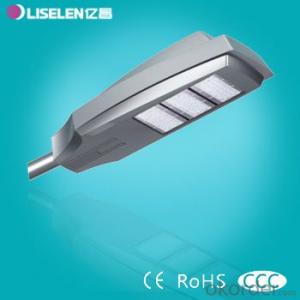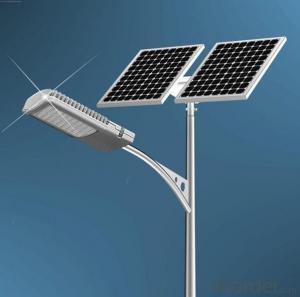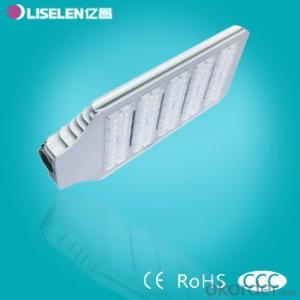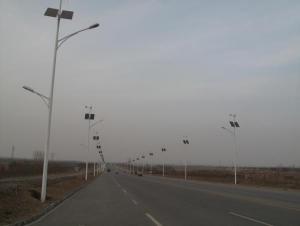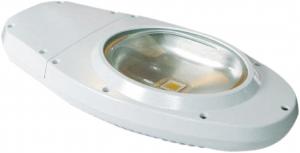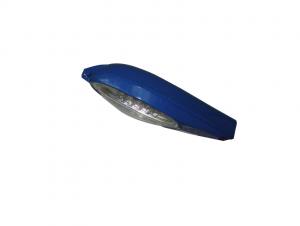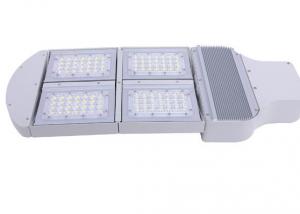Solar Light Strip Outdoor - Solar Street LED Light Model 2 Environment Friendly
- Loading Port:
- China main port
- Payment Terms:
- TT OR LC
- Min Order Qty:
- 10 set
- Supply Capability:
- 10000 set/month
OKorder Service Pledge
OKorder Financial Service
You Might Also Like
Feature:
1. Elegant Integrated Design, Aluminum alloy case 2. Super bright LEDs, 4800Lumens 3. Every element can be easily replaced by users 4. Over 140°wide lighting angle 5. Support 3 nights lighting time 6. Easy to install Specification Solar panel Monocrystalline silicon,17% efficiency Battery Type Li-ion rechargeable battery LED 4800Lumens Solar charging time 10 hours by bright sunlight Lighting mode 5Hrs 100% light+ 25% light till dawn Lighting time Over 36 hours material Aluminum alloy+ABS Install height 6-8m Waterproof IP65 Work temperature -20℃ to 55℃ Product size 1092*488*117mm Application l Courtyard/Garden/ Park/Street/Roadway/ l Pathway/Parking Lot/Private road/Sidewalk/Public square/ l Plaza/Campus/Airfield/Farm & Ranch/Perimeter Security/ l Wildlife area/Remote Area/Military Base
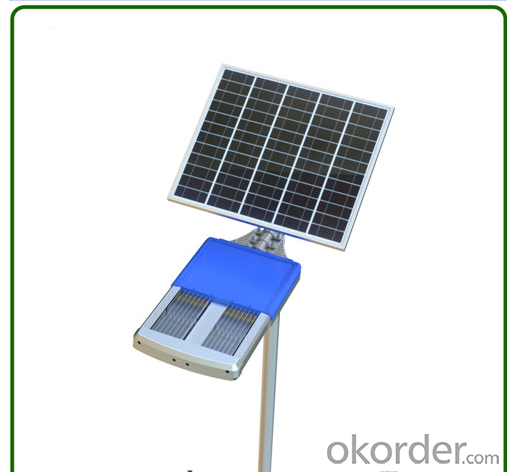


FAQ
1.How to install?
You can fix the product with the screw in the packing box and install the product on the area that needs illumination. Enough sunshine that can insolate the solar panel for charging has to be ensured. You have to pay attention that excellent effect of charging can be achieved when the solar panel has angle and no shelter and faces to the south area.
2.How to use and how to charge?
The product is off before delivery in order to avoid discharging during transportation. You can activate it by using the pin, take away the magnet, and face the solar panel to the sunlight or tearing off the film. This is depend on different item, the activate way may differ. Solar panel should be insolated with certain angle and charge in the daytime and bright automatically in the nighttime.
3.Dose the light illuminate in the daytime?
The light is optically controlled. It will not illuminate when there is enough light during the day. Once night falls, it will bright.
4.How is the effect of the PIR motion sensor?
The light will be in the energy saving mode when it is dark automatically, light will be off when it is dawn. With this characteristic, the light can be used as signal light, indicator light and continuous light.
PIR motion sensor light: Entering into the induction area when it is dark, the light will bright automatically and lasts for about 30 seconds, and then, it will turn to power saving mode.
- Q: Can solar lights be used for public parks or recreational areas?
- Yes, solar lights can be used for public parks or recreational areas. In fact, they are increasingly being utilized in these settings due to their numerous advantages. Solar lights derive their energy from the sun, which means they do not require any electricity or wiring, making them cost-effective and easy to install. They are also environmentally friendly as they do not release any greenhouse gas emissions during operation. Solar lights are typically equipped with sensors that automatically turn them on at dusk and off at dawn, ensuring efficient energy consumption. Additionally, they are low maintenance as they have long-lasting batteries and do not require frequent bulb replacements. By using solar lights in public parks or recreational areas, not only can the area be illuminated during the night for enhanced safety and security, but it can also contribute to the overall sustainability efforts of the community.
- Q: Can solar lights be used as security lights?
- Yes, solar lights can be used as security lights. Solar-powered security lights are designed to detect motion and provide bright illumination, helping to deter potential intruders and enhance security around homes or other properties. They are an energy-efficient and environmentally friendly alternative to traditional security lights that rely on electricity.
- Q: How do I ensure proper placement of solar lights for optimal charging?
- In order to achieve optimal charging for solar lights, it is important to consider several key factors: 1. Sunlight exposure: The primary concern when placing solar lights is to ensure they receive an ample amount of direct sunlight. It is advisable to position the lights in an area that receives maximum sunlight throughout the day. In the Northern Hemisphere, it is preferable to face them towards the south, while in the Southern Hemisphere, facing them northward is ideal. It is important to avoid placing them under any structures, trees, or buildings that may create shadows and obstruct sunlight. 2. Angle and tilt: The charging efficiency of solar lights can be influenced by the angle and tilt of their solar panels. It is recommended to adjust the angle of the panels to match the latitude of your location. Generally, the optimal tilt angle is equal to the latitude minus 15 degrees in winter and plus 15 degrees in summer. By doing so, the solar panels can capture sunlight at the most effective angle for charging. 3. Clear panels and regular cleaning: To ensure maximum light absorption, it is crucial to keep the solar panels clean and free from dust, dirt, or debris. Regularly wiping the panels with a soft cloth or sponge is advised. Failure to maintain clean panels may significantly reduce the charging efficiency of the solar lights. 4. Avoiding obstructions: It is essential to ensure that there are no obstructions hindering the path of sunlight to the solar panels. Trimming any overhanging branches or vegetation that may cast shade on the lights is important. Additionally, neighboring structures or objects should not create shadows on the solar panels during the day. 5. Optimal spacing between lights: If there are multiple solar lights, it is recommended to space them out adequately to prevent shading or competition for sunlight. This will guarantee that each light receives enough sunshine for optimal charging. 6. Seasonal adjustments: It should be noted that the sun's angle changes throughout the year due to the Earth's tilt. Consequently, it may be necessary to adjust the tilt angle of the solar lights seasonally to compensate for this change and maximize their charging potential. By adhering to these guidelines, one can ensure proper placement of solar lights to achieve optimal charging. This will result in bright and efficient lighting throughout the night.
- Q: Can solar lights be used for parking garages or underground spaces?
- Indeed, parking garages or underground spaces can make use of solar lights. Though solar lights rely on sunlight to generate power, advancements in solar technology have enabled them to operate efficiently even in areas with limited sunlight exposure. To cater to parking garages or underground spaces, solar lights can be strategically installed in areas that receive sufficient natural light, such as entrances, exits, stairwells, or open areas with skylights. Additionally, solar lights can be connected to a separate solar panel system positioned on the building's roof, allowing them to draw power from the sunlight collected above ground. By employing solar lights in parking garages or underground spaces, various benefits can be obtained. Firstly, solar lights are both energy-efficient and environmentally friendly, as they utilize renewable energy. This diminishes the carbon footprint associated with conventional lighting systems that depend on electricity generated from fossil fuels. Moreover, solar lights necessitate minimal maintenance and have a longer lifespan compared to traditional lights. This can lead to cost savings for the owner of the parking garage or underground space, as there is no need for frequent bulb replacements or electrical wiring upkeep. Lastly, solar lights can contribute to enhanced safety and security in parking garages or underground spaces. By ensuring proper lighting in these areas, they can help prevent accidents, discourage criminal activities, and instill a sense of security for users. In conclusion, although careful placement and consideration are required, solar lights can indeed be effectively utilized in parking garages or underground spaces to provide sustainable, cost-efficient, and safe lighting solutions.
- Q: Can solar lights be used for outdoor hotels or resorts?
- Yes, solar lights can be used for outdoor hotels or resorts. Solar lights are a sustainable and cost-effective lighting solution for outdoor spaces. They can be easily installed in various areas like pathways, gardens, poolside, and outdoor dining areas. Solar lights are powered by sunlight and store energy during the day, providing illumination at night without the need for electricity. This makes them perfect for outdoor hotels or resorts as they enhance the ambiance, improve safety, and contribute to environmental sustainability.
- Q: Do solar lights require a separate power source for charging?
- Solar lights do not require a separate power source for charging. They have built-in solar panels that absorb sunlight during the day and convert it into energy to charge the batteries inside. This stored energy is then used to power the lights during the night, eliminating the need for an external power source. Solar lights are eco-friendly and cost-effective as they rely on renewable energy from the sun.
- Q: Do solar lights require a separate power source or battery?
- Solar lights do not require a separate power source or battery as they are designed to harness energy from the sun. They typically consist of a solar panel that collects sunlight and converts it into electricity, which is then stored in a built-in battery. This stored energy is used to power the light during nighttime or when the sun is not shining. The solar panel continuously recharges the battery during the day, allowing the light to function independently without the need for additional power sources or batteries.
- Q: Can solar lights be used for outdoor markets?
- Yes, solar lights can definitely be used for outdoor markets. In fact, they are a popular choice for illuminating outdoor spaces, including markets, due to their many advantages. Solar lights are powered by the sun, which means they do not require any electricity from the grid, making them a cost-effective and environmentally friendly lighting solution. They can be easily installed in any outdoor setting without the need for complicated wiring or electrical connections, providing flexibility and convenience. Additionally, solar lights are equipped with built-in sensors that automatically turn them on at dusk and off at dawn, ensuring hassle-free operation. With advancements in technology, solar lights now come in various designs, sizes, and brightness levels, making it easy to find the perfect lighting solution for any outdoor market. Overall, solar lights offer a practical and sustainable option for illuminating outdoor markets, enhancing visibility, and creating a welcoming and vibrant atmosphere for vendors and customers alike.
- Q: Can solar lights be used in gardens or landscapes?
- Yes, solar lights can be used in gardens or landscapes. They are a popular and environmentally friendly option for illuminating outdoor spaces, as they rely on solar energy to power the lights. They are easy to install, require minimal maintenance, and can enhance the aesthetics of any garden or landscape while providing functional lighting at night.
- Q: What is the recommended placement for solar lights?
- The recommended placement for solar lights is in areas that receive direct sunlight for a significant portion of the day, such as in open spaces, gardens, or along pathways. It is important to avoid shading from trees, buildings, or other structures that may obstruct the sunlight and impact the charging efficiency of the solar lights.
Send your message to us
Solar Light Strip Outdoor - Solar Street LED Light Model 2 Environment Friendly
- Loading Port:
- China main port
- Payment Terms:
- TT OR LC
- Min Order Qty:
- 10 set
- Supply Capability:
- 10000 set/month
OKorder Service Pledge
OKorder Financial Service
Similar products
Hot products
Hot Searches
Related keywords






